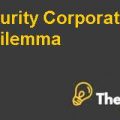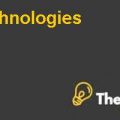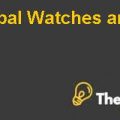Alternative 3: Global Positioning System (GPS)
Advantages
Real time tracking can be provided by the GPS system with limited amount of time amongst any other tracking device. Many Indian passenger trains have installed GPS system which has been very successful and is being implemented in all over passenger trains. Therefore, a live example is present for the company. The particular system addresses the need for all the departments in Indian Railway and can be fruitful if implemented. Clerks would no longer be required in the system nor any individual monitoring the device. It can easily send the data to the concerned department.
Disadvantages
The investment cost for acquiring the particular technology would cost the Indian Railway INR5 Billion which is the most expensive methods above all the alternatives. The chances of failure is very high which makes it unsuitable option for CRIS to adopt certain process when urgent implementation is required by the officials. Due to the fragile nature of device, the battery is not infinite which may requires additional cost repairing and changing it.
Alternative 4: Optical Character Recognition (OCR)
Advantages
The cost of investment is moderate and is affordable by the railways. The device is easy to implement and requires minimum amount of time as camera are fitted on the freight wagons. The device works properly and provides a complete track and trace of wagons. The process does not involve any manpower for running but it may require an individual through the process of identification of the movement. There is very little conflict of interest amongst stakeholders because it does not involve installing any device.
Disadvantages
The process has a disadvantage that there is too much dust and dirt on the train which would not allow the device to take the photo accurately about its movement. It would require additional cost for the painting and wipe off the dust from the freight wagon very frequently. The annual cost may increase during the process.
Alternative 5: Manual Hand-held Data Devise
Advantages
These are the cheapest mode of tracking freight wagons through manually by allowing the clerks noting the movement of the train. The implementation process is very simple as it requires only to train clerks for the process of using the devices. This system is closer to the current system, therefore minimal changes would be made which can increase complexity at workplace.
Disadvantages
The hand-held devices is very much outdated in most countries and is certainly not feasible for the future countries. Although it requires very low investment cost, but the annual cost associated with the staff salary and the training cost becomes very high. In addition, the more time is consumed in the particular process which is why companies have shifted to the automatic technological methods which are more feasible.
Necessary Information in making Important Decision
Ranbir Singh does not have the necessary information in making the right decision because he is unaware of the cost and benefit analysis of the RFID system which is being laid for the pilot project testing. This strategy would allow him to understand the entire cost associated with the RFID system and the benefits it will provide to the Indian Railway in the future (OECD, 2010). As Ranbir is unaware of the future prospects and benefits provided by the system, he is doubtful of the system and could not base his expectations more from the particular system. The future need and assessment has also not been addressed by Ranbir Singh. The CRIS does not know the future implications and necessities would be faced by the country when its GDP is on the verge of rise. In assessing the future possibilities and to plan for future, can only help the country to stand on its feet at the time when it requires technology the most.
Various Stakeholder Groups
The major internal stakeholders group includes operations department, mechanical department, signal and telecom department, and the finance department. The major external stakeholder include customers to which freight has been forwarded. The most important stakeholder for CRIS is the operations management from where the concept of freight wagon tracking has arrived. The department is responsible for capturing of the freight wagon’s number and eliminating the concept of manual data recording. The aim of the particular department is to identify the extra time which is spent by these wagons in maintenance facilities of in non-productive activities. These are also responsible for generating invoices for the local goods. Operations management takes care of the entire operating activities including the monitoring of the wagons to increase their productive time while decreasing their cost and idle time. It is necessary to cut cost in an organization for the purpose of maintaining cost effective approach to gain more revenues (Priemus & Nijkamp, 2005). Therefore, operations management requires all the operations to be turned automatic from manual operations.......................................
This is just a sample partial case solution. Please place the order on the website to order your own originally done case solution.











